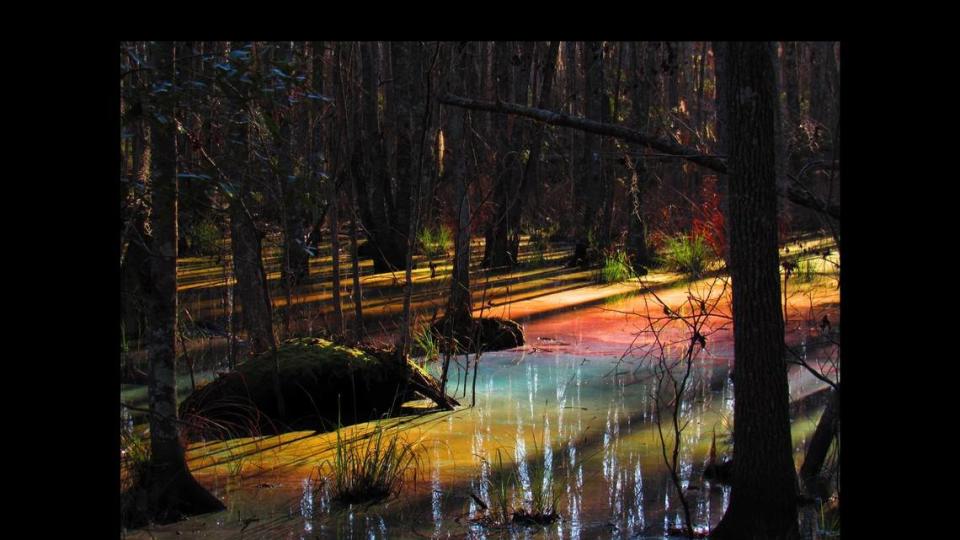Alien looking pools of color seen floating atop murky SC swamp. What’s causing it?
Congaree National Park has its share of mysteries, including an alleged Bigfoot abduction in the 70s, but the park says one of its most “spectacular” sights is a phenomenon few people will witness.
That’s because it’s a marvel seen only in the right light...at the right temperature and in the spookiest parts of the park: snake and bug infested swamps.
Alien looking mats of vibrant color have been found bubbling up in the murky water, and photos shared March 23 by the National Park Service show they are both beautiful and unsettling, with an ability to stretch over large areas.

Called “rainbow pools,” the ponds resemble syrupy layers of red, blue, pink, yellow, purple and some colors that may not have a name. It’s florescent, too, like an oil slick, but disperses when stirred, unlike petroleum, the park says.
“These ‘rainbow pools’ ... are not a sign of pollution but a natural occurrence,” park officials wrote on Facebook.
“Combined with very still waters, a few days without rain, and the correct angle of the light ... nature may provide you with a truly unforgettable Congaree experience.”
Rangers at the park, 18 miles southeast of Columbia, have two ideas as to what causes the pools, both involving something rotting:
“Many times they are the result of decaying vegetation, especially cypress cones and needles, that release their natural oils,” the park service posted on Facebook. “The other cause can be bacteria breaking down iron in the soil.”
The phenomenon is typically seen in cooler months “early in the morning or later in the day as sun is setting (and) gives a proper angle,” the park posted. The pools are occasionally seen in water near trails, but not in areas near creeks, officials said.
At 26,000 acres, Congaree National Park is considered “the largest intact expanse of old growth bottom land hardwood forest remaining in the southeastern United States,” according to the park’s Website.
The tree canopy is 100 feet up, with the tallest being a single loblolly pine that is 167 feet tall and nearly 15 feet around, the park says. Though often referred to as a swamp, the fertile tract is better described as river flood plain that is often covered by waters from the Congaree and Wateree rivers, the park says.

